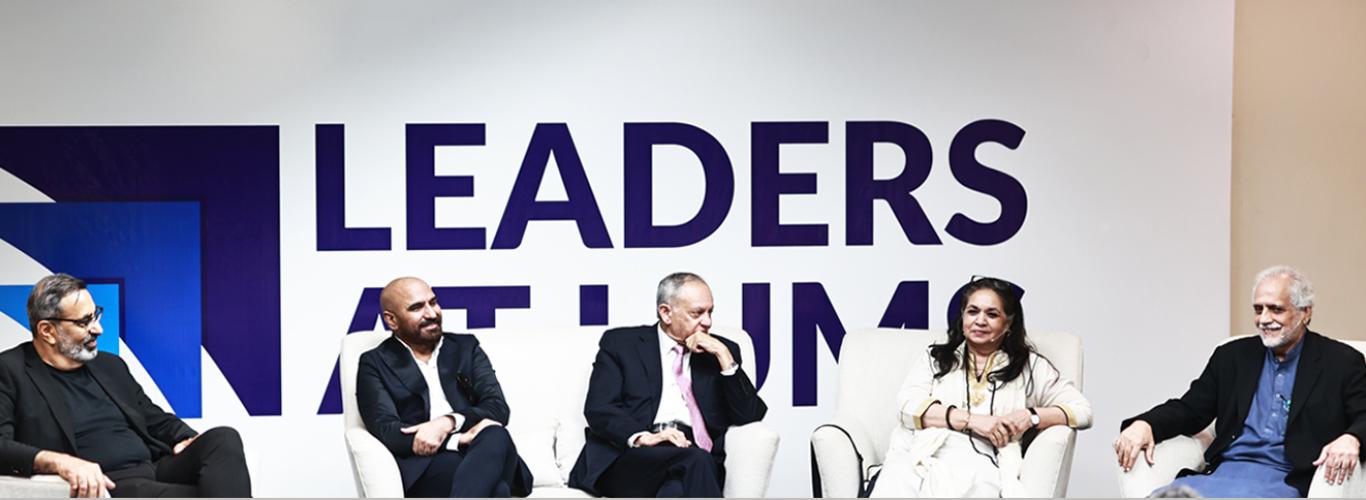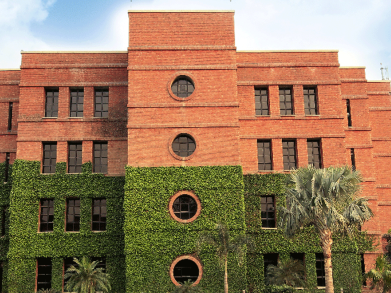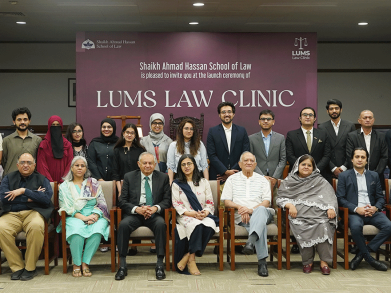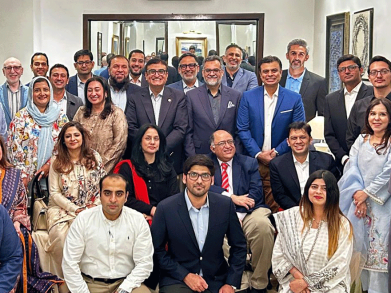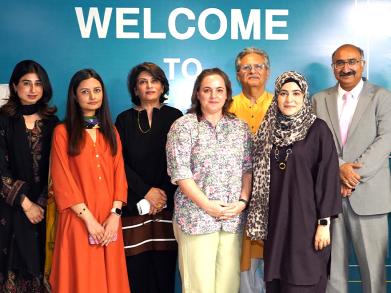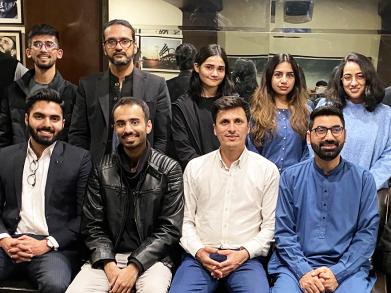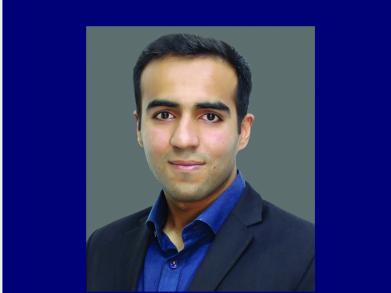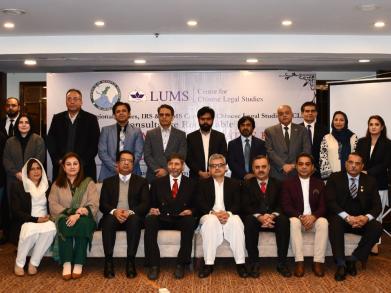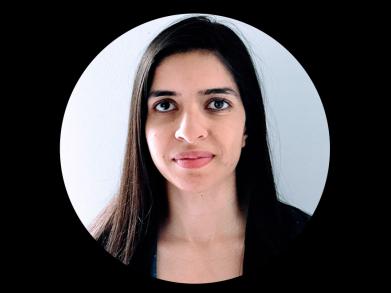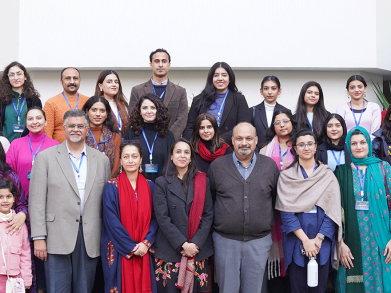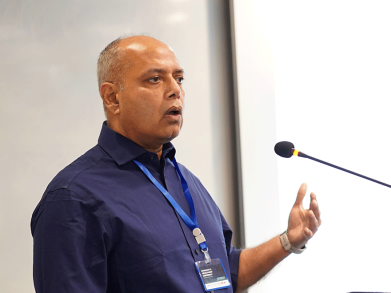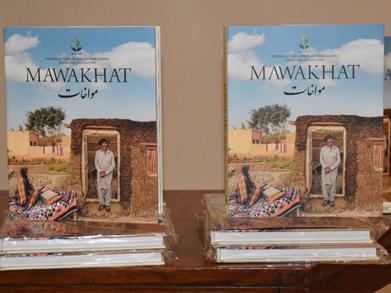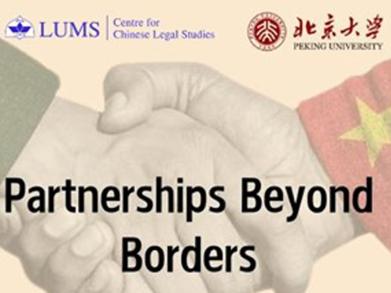Special Leaders at LUMS Session Held with the Masterminds Behind the Pakistan Pavilion at Dubai Expo 2020
The LUMS community was in for a treat with the latest Leaders at LUMS session held at the University on May 19, 2022. ‘Leaders at LUMS: Pakistan Pavilion Special’ brought together the masterminds behind the award-winning Pavilion at the Dubai Expo 2020 including Mr. Shahid Abdullah, Principal and founding partner of Arshad Shahid Abdulla (Pvt.) Ltd; Ms. Noorjehan Bilgrami, artist, designer and educationist, as well as the founding member of the Indus Valley School of Art and Architecture; Mr. Rashid Rana, award-winning artist and Mr. Abdul Razak Dawood, Pro-Chancellor, LUMS. The session was moderated by Dr. Arshad Ahmad, Vice Chancellor, LUMS.
The session kicked off with a video that gave the audience a glimpse of the vision behind the Pakistan Pavilion and what it was like walking through its different exhibits. With its grand structure and mesmerising interior, the Pakistan Pavilion quickly gained international recognition and crossed the one million visitors mark in just five months. It also received the Silver Award for Best Interior Design and the BURJ CEO Award for the Best Pavilion Exterior Design.
Dr. Ahmad shared his thoughts on the Pakistan Pavilion and said, “I had the privilege of visiting the Pavilion twice and one can understand what an immersive, amazing experience it is for anyone from anywhere in the world, especially if you’re from Pakistan. The Pavilion made it to the top from amongst 192 countries. That does not happen randomly, that happens by design, and one can see the designers in the panel in front of you.” He then introduced the guests and asked them about some of the challenges they faced during their journey at the Dubai Expo.
“I think the biggest challenge was how one pulls visitors in?” shared Mr. Abdullah. “We could make a beautiful pavilion inside but we know that when we go to an expo you don’t have time to visit more than six to seven pavilions in a whole day. We realised that whoever is coming to the Expo probably has a list of pavilions they would like to visit. So, no matter how nice a pavilion you make, how on earth are you going to get these people inside Pakistan?” This is where, he explained, they brought Mr. Rana in, who then transformed the external structure into a work of art.
The entire external form was made from 24,000 unique panels; each a different colour, shape and size. Every panel had to fit the intricate pattern precisely to execute the intended look and feel of the structure. Talking about his motive for joining the Pavilion’s creative team, Mr. Rana said, “I had never worked with the government before but I really wanted to do something to help change the perception of the country. Art can be an elitist activity, whatever you do, you tend to remain in the confines of galleries and exhibitions. That is why I saw this as a great opportunity from the get-go. We could create something that could send a very different message to the world.”
Once people, attracted by the Pavilion’s exterior, walked in through the doors, curating their experience was a challenge of its own. Ms. Bilgrami knew right from the start how massive this undertaking was. “How do you represent Pakistan and bring its entire essence in a single place? Where do you start? Everything starting from our history to our geography to our culture is incredibly diverse. How do you put all of it together, package it, in a simple minimalistic way?”
This led to a series of discussions, after which the team agreed on one theme for the Pavilion: ‘Pakistan - A Hidden Treasure’. Ms. Bilgrami explained, “We had eight spaces in the Pavilion for a visitor to walk through. From a visitor’s time of entry to his exit, it all had to be connected. The experience needed to be seamless. I used music that was unique to each region. I used fragrances, colours, and films; there were so many layers. From a boat being made in Sukkur to craftsmen being called in from Punjab, every item in every part of the Pavilion was made in Pakistan and had a story behind it.”
All the panellists emphasised how the project was driven by the support and passion of countless people. Mr. Dawood elaborated on how all the different stakeholders came together to help execute the project. “It was for the first time, I think, a government and private sector project was executed in time and within budget. The Prime Minister approved only five million dollars. We had to raise the rest of the money ourselves. I must give full marks to corporate Pakistan because all the major corporations in Pakistan contributed very generously. That’s what made it happen. It was like a miracle, and everything fell into place. The Expo administrator said you can’t do it [in such a short span of time] but we took the risk. The creative team then did magical work and the Pavilion rose like a phoenix.”
Towards the end of the session, the floor was opened for questions. Many of the audience members appreciated the panellists for their hard work and commitment to representing Pakistan and its hidden treasures on the international stage. Dr. Parvez Hassan, Member, LUMS Board of Trustees, who was also present in the audience, commented on how selecting the creative team on merit was the reason for the success of the Pavilion. “The lesson out of this whole thing is that if the process is right, the result is good. This is what needs to be highlighted more than anything.”
A common sentiment among the audience and the panellists was that now that the Expo is coming to an end, efforts need to be made to bring the Pavilion in some form or another to Pakistan so that Pakistanis can also visit the exhibits and feel proud of their country’s art, culture and heritage.
To watch the complete session, click here.

